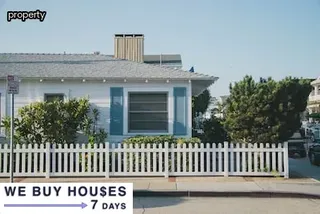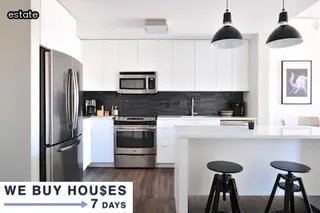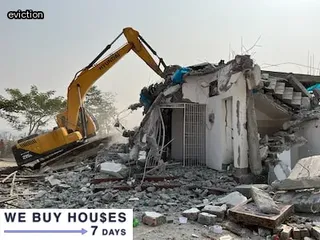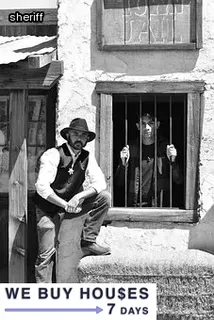In South Dakota, a tenant must meet certain eligibility requirements to be legally qualified to rent a property. To begin the process, potential tenants must be over the age of 18 and have sufficient income to pay rent on time.
Proof of income will likely need to be provided in the form of pay stubs or bank statements. Landlords are also likely to require references from previous landlords or employers, as well as running a credit check for further verification of income and payment history.
In addition, applicants should provide a valid form of identification such as a driver's license or passport. If any of these requirements are not met, it is unlikely that an individual will qualify for tenancy in South Dakota.
It is important for landlords to ensure that all qualifying criteria is met before signing an agreement with their tenant in order to protect themselves from any future complications that may arise during the tenancy.

In South Dakota, a tenancy lease typically lasts for one year, and the tenant must give at least 30 days’ notice to the landlord prior to vacating the property. If the tenant fails to provide this notice and abandons the property, then it is up to the landlord to take legal action in order to reclaim the premises.
The landlord should file an eviction notice in court, which will result in a hearing where both parties can present their case. If the court finds that the tenant has abandoned the property without proper notification, then they can legally remove all personal belongings from the premises and begin looking for a new tenant.
It is important for landlords to be aware of South Dakota's laws regarding lease duration so that they can take immediate action if needed.
Under South Dakota landlord-tenant law, landlords are required to abide by certain rules when it comes to collecting and returning security deposits. Security deposits must be held in an escrow account, separate from the landlord’s assets and cannot exceed one month’s rent.
Landlords are responsible for providing tenants with a written statement of the conditions under which all or part of the deposit may be withheld upon move-out. Within 45 days after a tenant vacates, landlords must provide a written accounting of any deductions made from the security deposit and return any remaining balance.
If a tenant abandons the property before their lease is up, landlords should follow certain steps such as making reasonable efforts to contact the tenant regarding their intention to leave, taking steps to secure and protect the rental unit, and documenting these steps in case of legal disputes.

Property maintenance is an important aspect of South Dakota landlord-tenant law, and the expectations for both the tenant and landlord should be outlined clearly in the lease. Landlords are expected to keep their rental properties in a safe and livable condition and must make necessary repairs promptly.
Tenants must maintain their residence in a clean and sanitary manner, use all appliances as intended, take reasonable care of the premises, and report any issues to their landlords promptly. Both parties should document any maintenance or repairs that need to be made so that either party can prove they were completed or there was an attempt to do so if needed.
It is essential that landlords and tenants understand these expectations before entering into a lease agreement to ensure they are able to uphold them throughout the term of the agreement.
Property owners and tenants in South Dakota are both subject to certain laws regarding access rights. Landlords have the right to enter their rental property when necessary for the purpose of making repairs or conducting inspections.
However, they must give a notice of at least 24 hours prior to entering. Tenants, on the other hand, have the right to privacy and can only be interrupted if it is an emergency or there are safety issues that require immediate attention.
Additionally, landlords cannot harass their tenants by entering the property too frequently or without proper notification. In cases where a tenant abandons their property, landlords must follow strict guidelines on how to legally reclaim possession of the rental unit.

Subletting rules and regulations are important to be aware of when discussing South Dakota landlord-tenant law. In South Dakota, landlords may not unreasonably deny a tenant’s request to sublet if their lease allows it, but they can impose certain conditions on the sublease.
If a tenant wishes to sublet their unit, it is essential that they provide the landlord with detailed information about the new tenant and obtain written notice from the landlord that they have approved the sublet. Additionally, tenants must also make sure that any security deposits paid by them or their original leasehold remain in place for the duration of the sublease.
It is important for landlords to understand that if a tenant abandons a property without providing proper notice, any rights to collect rent or damages from them end with the termination of their lease. Landlords should take steps to protect themselves by securing all vacant units and ensuring that all tenants understand their obligations under the terms of their lease agreement.
Terminating a tenancy in South Dakota is a process that must be followed carefully. Landlords must provide written notice to the tenant that the tenancy is being terminated, and the tenant must be given ample time to vacate the property.
The landlord can begin eviction proceedings if the tenant does not vacate within the required time frame. In addition, if a tenant abandons a property, landlords must take specific steps to protect their rights and interests, including re-renting the unit as soon as possible and taking legal action against any unpaid rent or damages.
Understanding these procedures can help landlords ensure their rights are protected when dealing with a tenant abandonment.

Under South Dakota landlord-tenant law, if a tenant abandons the property, the landlord must follow certain procedures. The landlord must first notify the tenant in writing that they are considered to have abandoned the property.
The notice should include information regarding any rent owed and the steps necessary to reinstate tenancy. If the tenant does not respond within 14 days of receiving this notice, then the landlord can proceed with abandonment laws in South Dakota.
This includes taking possession of their belongings, using reasonable efforts to re-rent the unit, and disposing of any unclaimed personal items after 21 days. Landlords should also keep in mind that if a tenant has paid rent for only part of a month’s lease period, they may still be considered to have abandoned property even if they leave before their lease ends.
Finally, landlords may be entitled to seek damages from tenants who abandon their rental unit without proper notice or payment of rent due.
Sharing rental information online can be a great benefit for landlords in South Dakota, especially when it comes to situations where a tenant abandons the property. For example, posting rental info online can help landlords find potential new renters quickly, without having to go through the lengthy process of advertising and interviewing.
Additionally, having an online presence allows landlords to easily access all relevant information about their tenants, including payment records and references. This makes it easier for them to track down delinquent tenants or those who have skipped out on their rent.
Furthermore, landlords can use these records to ensure that any future tenants they rent to meet certain standards and are responsible renters. All in all, the ability to share rental info online is a valuable asset for landlords in South Dakota dealing with abandoned properties.

If a tenant abandons your rental property in South Dakota, it is important to understand the legal consequences of abandonment. Landlords should be aware that abandonment does not automatically terminate the lease and may still be liable for unpaid rent or damages.
It is also important to take specific steps to protect yourself from any potential claims by the tenant. First, you must take reasonable steps to attempt to contact the tenant, including sending them a notice of abandonment at their last known address.
Once you have determined that the tenant has abandoned the property, you must try to re-rent it as soon as possible in order to limit your losses. Additionally, you should inspect the property for any damage and document all costs associated with returning it to renting condition.
Finally, if necessary, landlords can pursue legal action against tenants who have abandoned their rental properties in order to recover unpaid rent or damages caused by their neglect or abuse of the property.
When it comes to getting a tenant out of your property, the first step should always be to try and resolve the issue without having to evict them. However, if eviction is necessary, there are still other options available to you as a landlord in South Dakota.
One such option is known as abandonment, which requires that the tenant has not paid rent for at least one month and has left personal property behind on the premises. If this happens, then you can enter the rental unit and take possession of any items left behind after giving notice to the tenant.
You can then begin proceedings to have any unpaid rent or damages collected from them. Another option is allowing tenants to voluntarily surrender their rights in return for being released from any further obligations under the lease agreement.
Finally, you may also decide to pursue a collection action against your former tenant if they owe you money after leaving your property.

When dealing with a tenant who has abandoned a property, it can be beneficial to explore other forms of alternative resolution. Arbitration or mediation can be used to come to an agreement between the landlord and the tenant.
This can often be a faster and more cost-effective solution than entering into litigation. Additionally, both parties may benefit from arbitration or mediation because each has the opportunity to explain his or her position and reach an understanding.
Furthermore, this form of dispute resolution allows both parties to maintain control over the outcome instead of allowing a court or jury to make a decision that neither party may agree with. Finally, it is important for both parties to understand their rights and responsibilities before entering into any type of agreement in order to ensure that everyone’s interests are being taken into consideration.
When applying to become a landlord in South Dakota, it is important to seek professional advice from an experienced attorney or rental agency. Doing so will ensure that you are aware of all the state laws and regulations regarding landlord-tenant relationships.
Knowing your rights will help protect you from any potential legal issues or disputes with tenants. Additionally, understanding the law may also provide insight into what to do if your tenant suddenly abandons the property.
Having access to a knowledgeable professional can provide guidance on how to proceed in such a situation and ensure that you remain compliant with all applicable laws.

It is important for South Dakota landlords to document any property damage and maintenance issues in case a tenant abandons the property. Landlords should take photographs, videos, or other forms of visual evidence that show the condition of the property before and after any damage or maintenance issues.
It is also important to document any complaints from tenants regarding these problems. Keeping records of communication between landlord and tenant regarding these issues will help defend against any legal disputes if a tenant abandons the property.
Furthermore, landlords should keep detailed records of all inspections they have conducted on the rental unit, as well as all maintenance work performed by professionals. These documents will be instrumental when it comes to proving a landlord's compliance with South Dakota landlord-tenant law in case a tenant abandons their rental unit.
When a tenant abandons a property in South Dakota, it is important for the landlord to address any unauthorized subletting activities that may have occurred. According to South Dakota law, landlords are required to provide written notice of termination of the tenancy agreement if they suspect subletting activities.
The landlord must also make reasonable efforts to locate the tenant and communicate with them regarding the situation. If the tenant cannot be located, then the landlord should take steps to mitigate damages and regain possession of the property.
In addition, landlords are encouraged to consult with an experienced attorney in order to understand their rights and obligations under South Dakota landlord-tenant law when it comes to addressing unauthorized subletting activities on their properties.

When a tenant fails to make their rent payment on time, it is important for landlords in South Dakota to be aware of their rights and responsibilities. Landlords should ensure that any late or missed payments are addressed promptly in accordance with South Dakota landlord-tenant law.
First, the landlord should send a notice to the tenant informing them of their failure to pay rent. Depending on the terms of the lease agreement, this notice may also include additional fees or fines.
Furthermore, landlords should be sure to provide the tenant with an opportunity to cure the issue before taking any legal action against them. In some cases, if a tenant continues to remain delinquent in rent payments, it may be necessary for a landlord to file an eviction lawsuit against them.
On the other hand, if a tenant abandons the property altogether and does not respond to communication from the landlord, then it may be necessary for the landlord to pursue legal remedies in order to regain control of the rental unit and ensure that they are able to collect all owed rent payments.
When renewing a lease agreement in South Dakota, it is important for landlords to understand the state's landlord-tenant law. The terms of the lease should be reviewed for any changes or updates that need to be made.
Tenants should also be informed of the renewal process and any changes in rental rates or other lease terms. Landlords must ensure that all paperwork is completed and filed correctly.
If a tenant abandons the property, the landlord should not attempt to enter the premises without first obtaining permission from the court. They should also contact local law enforcement to report an abandoned property and take steps to protect their rights as a landlord under the law.
In some cases, this may include filing an eviction notice with the court or taking legal action against former tenants who have failed to pay rent or violated other terms of their lease agreement. Knowing what to do when your tenant abandons a property in South Dakota is essential for landlords to protect their interests and comply with state laws regarding leases and evictions.

When a tenant moves out of a property in South Dakota, it is essential for the landlord to conduct a move-out inspection. The inspection should be conducted as soon as possible after the tenant has vacated the premises.
During the inspection, landlords should document any damages and take photographs of the condition of the property to ensure that they receive all applicable deposits and fees from the tenant. They should also review any written agreements between themselves and the tenant to determine if any additional charges are due.
Landlords should take detailed notes on their findings during the inspection and keep them on file in case of disputes with a former tenant. If any of the tenant’s personal possessions remain, they should be carefully boxed up and stored until arrangements can be made for retrieval or disposal.
Landlords should also check to make sure all utilities are disconnected and that no unauthorized persons have taken up residence in the unit. By conducting an accurate move-out inspection, landlords in South Dakota can protect their rights while maintaining good relationships with their tenants.
South Dakota landlord-tenant law requires that a tenant's security deposit be returned within 30 days of the tenant vacating the property. This timeline is in place to ensure that tenants' deposits are refunded in a timely manner.
In cases where a tenant abandons the property, landlords must evaluate any applicable state laws and regulations to determine which policies they need to follow when it comes to refunding the security deposit. Landlords should also review their lease agreement with the tenant and any applicable state laws regarding abandonment of rental property.
If, after assessing all applicable policies, landlords conclude that they are entitled to keep all or part of the security deposit, they must provide written notice detailing their decision and any related deductions from the security deposit within 30 days of the tenant abandoning the property. Furthermore, landlords should keep detailed records documenting all deductions made from the security deposit and provide copies of these records to the former tenant upon request.

When a tenant abandons a rental property in South Dakota, the landlord is faced with a variety of possible actions. Understanding the various resources available after terminating the tenancy can help landlords make informed decisions in this situation.
For example, landlords may choose to initiate an eviction process through local courts, file an abandonment petition with the court clerk, or take possession of the abandoned personal property and dispose of it if certain conditions are met. Landlords should also be aware of their rights to collect unpaid rent and any additional damages related to the tenant’s abandonment.
It is important for landlords to consult local laws and regulations as well as industry professionals such as attorneys or real estate agents to ensure that all legal requirements are properly fulfilled during such proceedings. Additionally, state agencies like the Department of Labor & Regulation provide helpful resources for understanding South Dakota landlord-tenant law when dealing with an abandonment situation.
South Dakota abandonment laws provide a legal framework for landlords and tenants in the event of tenant abandonment. In South Dakota, when a tenant abandons the property they are renting, the landlord is responsible for providing written notice to the tenant that outlines the details of their breach of contract.
Landlords must give at least 10 days’ written notice to the tenant before taking any further action. If after 10 days' written notice, the tenant does not respond or remedy the breach of contract, then the landlord can take steps to reclaim possession of their rental property.
This includes removing any personal items left behind by the tenant and changing locks. Once repossession has been taken, it is important for landlords to follow all applicable laws and regulations related to safekeeping of abandoned items in order to avoid potential legal issues down the road.
Landlords should also consult with an attorney if they have any questions or concerns regarding South Dakota abandonment laws and their rights as a landlord under these laws.

In South Dakota, a landlord must issue a 30 day notice to vacate when a tenant has abandoned the property. This notice can be served in person or by mail and outlines the amount of time remaining on the rental agreement before the landlord regains possession of the property.
The notice must also include a statement that if rent is not paid or arrangements are not made to pay it, then the tenant will be legally evicted. In addition, if any personal property still remains on the premises after the expiration of this notice, then it will be assumed to have been abandoned and may be disposed of by the landlord.
Finally, tenants should also note that they are liable for any unpaid rent up until their lease expires or they vacate according to this notice.
In South Dakota, the law 43-32-13 is a law specifically related to landlord-tenant relationships. This law outlines what a landlord should do if their tenant abandons the property.
Under this law, a landlord must take steps to attempt to contact the tenant via certified mail or other means of communication, and must also post written notice of abandonment at the residence for at least three consecutive days. If after these steps are taken, and no response from the tenant is received within 15 days, then the landlord may terminate the lease and repossess their property.
The landlord must also make reasonable efforts to protect any personal property left behind by the tenant before disposing of it.
In South Dakota, the eviction process can take anywhere from a few weeks to several months depending on the circumstances. The first step in evicting a tenant is to provide written notice that outlines the cause for termination of tenancy and sets out the amount of time for them to vacate the property.
Landlords must then file an eviction complaint with their local court and serve it to their tenant. After being served, tenants have five days to respond before a hearing date is set by the court.
If a hearing is necessary, both parties will present evidence and arguments before the judge makes a final ruling. The landlord must also follow all rules set forth in South Dakota landlord-tenant law throughout this process, including providing proper notice before any action is taken and allowing tenants adequate time to move out voluntarily.
Once the eviction has been finalized, landlords may proceed with changing locks or disposing of abandoned items if they choose to do so.
A: In South Dakota, landlords must serve their tenant with an Unconditional Quit Notice before filing for a lien and notifying the Sheriff of their intent to regain possession of the property. The Sheriff will then post a notice on the dwelling giving the tenant 24 hours to vacate or face eviction. Once the 24-hour period has passed and the tenant has not vacated, the landlord may file an eviction with the court.
A: The South Dakota Landlord and Tenant Act requires that the landlord must mail an abandonment notice to the tenant's last known address. If the tenant does not respond within 10 days of it being mailed, then the landlord may take possession of the real property.

A: If a landlord suspects that their tenant has abandoned the dwelling, they should take appropriate steps to protect their ownership rights and ensure that they are not engaging in any discriminatory or discriminating practices. In South Dakota, this requires the landlord to make reasonable attempts to contact the tenant and provide an opportunity for them to return possession of the property. If these efforts fail, landlords should seek further legal advice from qualified professionals.
A: In South Dakota, the landlord must take reasonable steps to limit further damage to the property. The landlord is also required to make an effort to re-rent the premises as soon as possible and mitigate damages by attempting to reduce or eliminate any losses. The tenant may be liable for any costs associated with repairs caused by their negligence, wear and tear, plumbing or heating emergencies.
A: If a tenant abandons a dwelling in South Dakota in bad faith, the landlord may pursue legal action to reclaim possession of the property. The landlord should seek the advice of an attorney and be prepared to pay any applicable attorney’s fees. The landlord may also be able to recover damages for rent lost and expenses incurred due to the tenant's breach of contract.